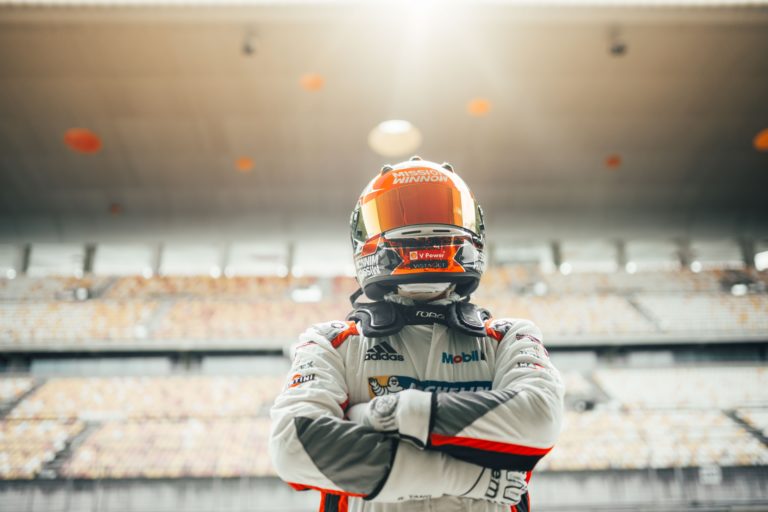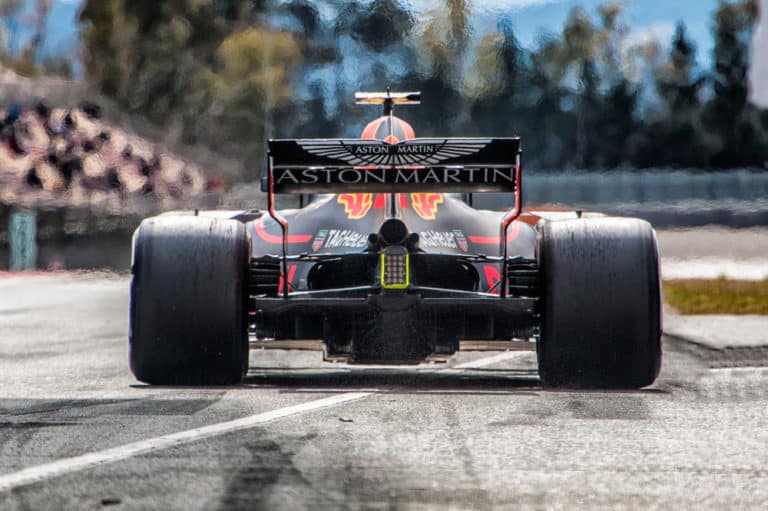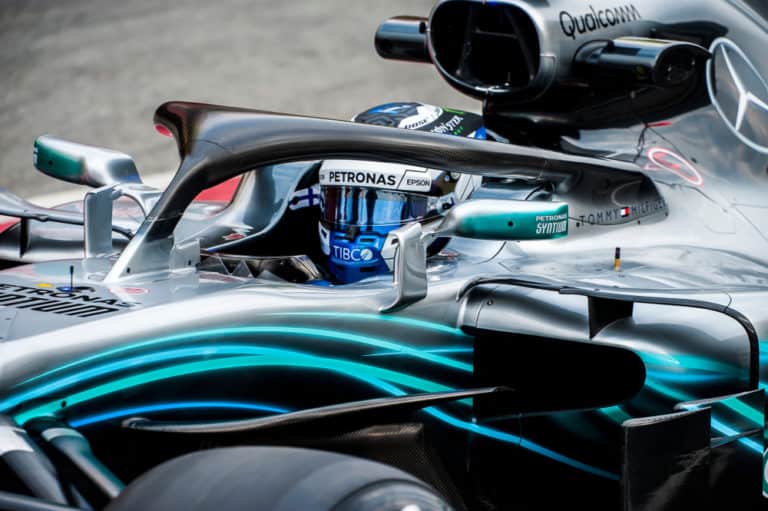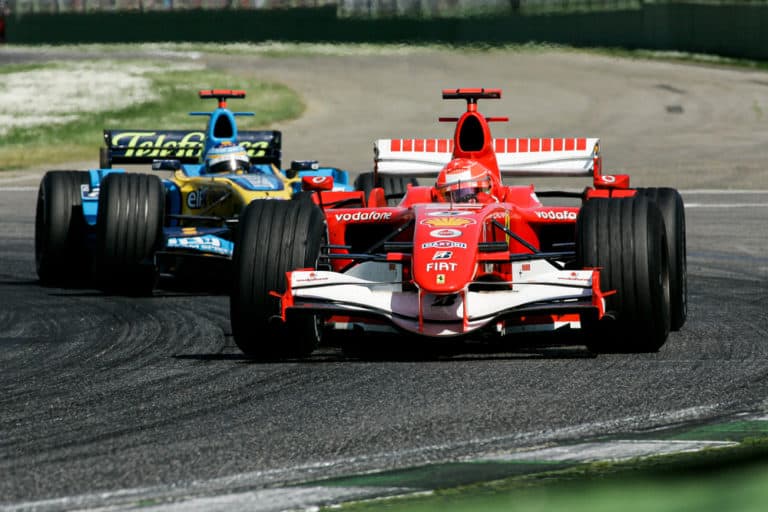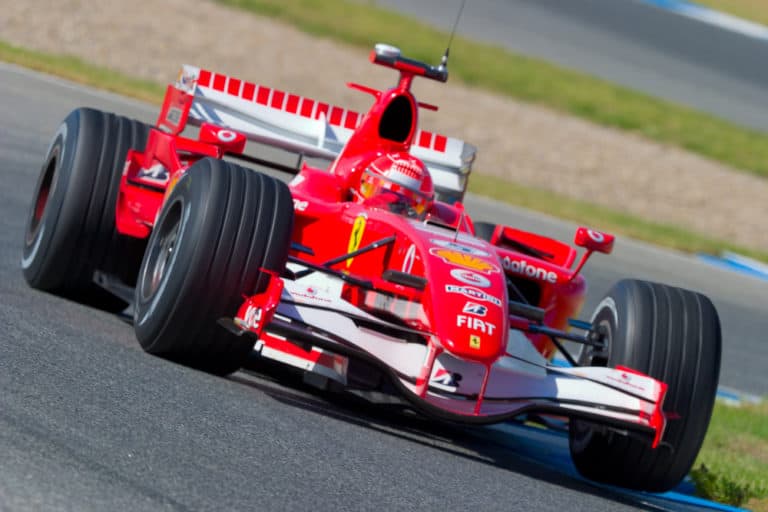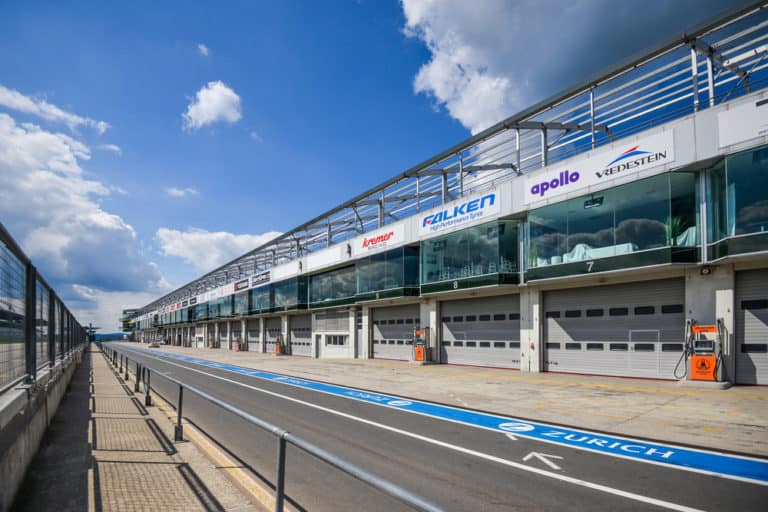Editorial credit: Igor Y Eros / Shutterstock.com
Formula 1 is one of the most exciting and entertaining sports, but it is also a real audiovisual spectacle, with numerous trackside cameras and shots during the broadcasts to offer the most incredible show. One of the most important is the onboard cameras, but how do they work?
Each Formula 1 car has several small cameras placed in different parts and at different angles that offer a new level of immersion, as viewers can see the action on the track from the inside. These cameras allow you to see what each driver is doing from inside his own car.
Their addition to broadcasts from the mid-1980s onwards transformed how we watch racing forever, with unique insider shots combined with classic camera tracks. Let’s go into detail to find out all about onboard cameras.
Onboard Cameras In Formula 1: History
The first onboard footage appeared during the first decade of Formula 1, in the 1950s; although they were not very practical for live use during races, they were huge, heavy, and uncomfortable for the drivers. In the 1960s, onboard footage was mainly used in feature films, and from the 1970s onwards, onboard cameras were sometimes used in Formula 1 practice sessions.
It was during this decade that onboard cameras developed and evolved. Formula 1 took advantage of the advances made in Australia and the United States with their use in Nascar and IndyCar to adopt its own version starting in the mid-1980s. The first time an onboard camera was used in a live Formula 1 race was during the 1985 German Grand Prix at the Nürburgring.
François Hesnault fitted a single camera in his Renault. The Frenchman qualified 23rd and retired on lap 8 with clutch problems, so the onboard camera showed the opening laps as it got dirtier and dirtier. The first onboard cameras were very shaky and clumsy and used the “Heath Robinson system” to clean the lenses. From that moment on, onboard cameras started to be used more and were mounted in some cars.
During these early years, Formula 1 broadcasts relied on analog microwave signals from a helicopter flying over the circuit, which posed economic and physical limitations to the widespread deployment of onboard cameras.
Technological advances, which made it possible to dispense with an aerial helicopter, and improvements in stability, cleanliness, weight, and quality of onboard cameras meant that by the end of the 1990s, all cars were fitted with onboard cameras. Onboard cameras have been delivering high-definition 1080p images since 2016, and 360º cameras mounted on the nosecone were added in 2018. Helmet cams have also been introduced in recent years.
How Many Onboard Cameras Are There In Each F1 Car?
Since 1998, every car on the grid has been fitted with at least three onboard cameras. Today, each car carries 5 onboard cameras. 2 on the T-shape, just above the driver’s helmet, with one facing forward and another backward, and 3 on the nose and chassis.
The nose and chassis cameras include cameras on the front wings, engine cover, and inside the rearview mirrors, although not all are used in every race. Likewise, as we said before, in recent years, F1 has also been experimenting with 360-degree cameras, although not live.
What Is The Helmet Cam In F1?
Formula 1 constantly innovates and evolves in all aspects, and onboard cameras are no exception. During the last few years, the so-called helmet cam or “driver’s eye” has increased and has become very popular. In 2022, all drivers wearing Bell-branded helmets mounted them; in 2023, all drivers on the grid are using them.
The helmet cam is a micro-camera placed inside the driver’s helmet, at eye level, and in the protective padding. This makes it possible to see precisely what the driver sees since the images come directly from his helmet, offering the same vision the driver has at that moment. Therefore, its correct name would be visor cam since it is inside the helmet visor.
These cameras have a diameter of 8 millimeters and weigh only 2.5 grams, similar to cell phones, so they are not a nuisance or discomfort for drivers, as they are hardly noticeable. The images offered by helmet cams are shaky and shaky, offering a new level of immersion in the races.
Shaking, jerking, head turning left and right to check the mirrors, raindrops hitting the visor… From the helmet cam, we can see everything the driver does and sees. In addition, you can see the steering wheel perfectly, with the luminous screen in the center and the dozens of buttons and controls that the driver operates while driving.
How Do F1 Onboard Cameras Clean Themselves?
The trackside cameras are operated by professional videographers, who are in charge of moving the camera, following the driver they are interested in, and cleaning it. However, how are the onboard cameras cleaned?
Each onboard camera is covered by a plastic sheet that rotates in front of the lens at fixed intervals. Behind it is a kind of brush that cleans the sheet as it rotates. This cleans the lens of any dust or rain that may fall on the lens, as well as any debris from the track or cars that may impact the lens. It is a very effective and relatively simple system with excellent results.
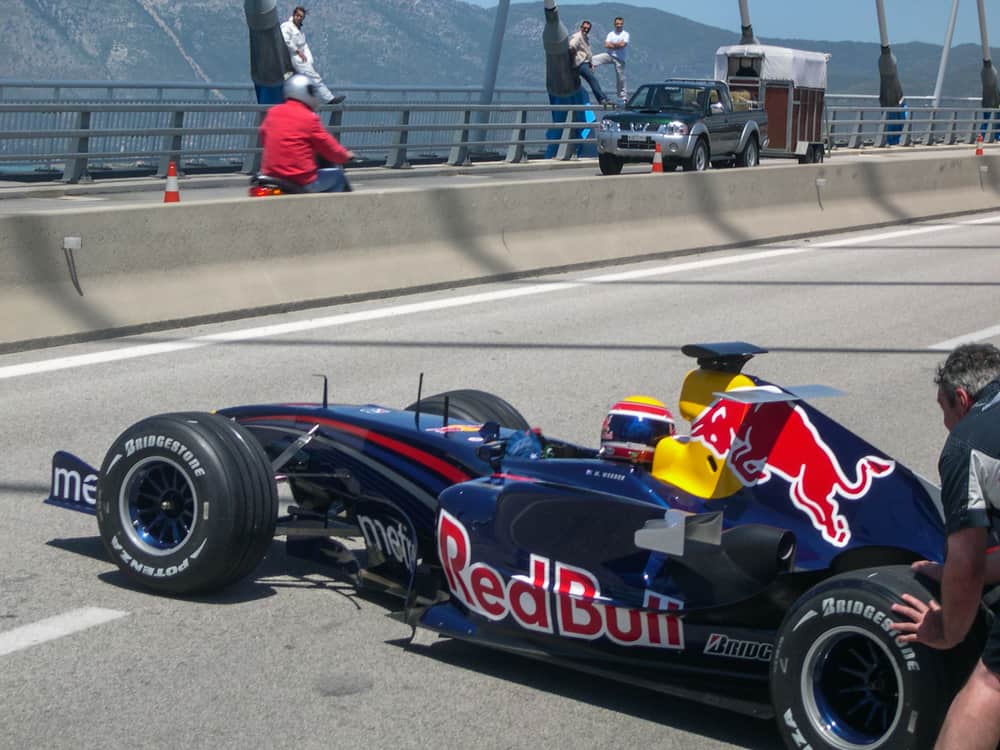
Why Are Some F1 Cameras Yellow?
Watching Formula 1 races, you may have noticed that some cars have a yellow block above them while others have a black one. This block is the set of onboard cameras we discussed earlier, known as the T-shape.
It is above the cockpit, and there is a camera that records forward, being the classic onboard camera that we are so used to seeing. Another one that records looking backward is used primarily when another follows one driver or fights to see the other car better.
Each team uses one black and one yellow T-shape. This is to differentiate their drivers more easily on the track if the bib or helmet is less visible. This way, when you see the T-shape, you can tell directly which driver it is. Typically, the No. 1 driver of each team uses black, while the second driver uses yellow.
If a driver finishes ahead of his teammate in the championship the following season, he will use the black T-shape. However, some drivers may prefer one color or another and ask the team for a change. Lewis Hamilton, in 2022, asked to have the yellow camera to look better with his yellow helmet.
Conclusion
Onboard cameras have become essential to Formula 1 broadcasts, capturing incredible moments from inside the track and putting us in the driver’s shoes. They began to be used in the mid-1980s, and their use is indispensable today.
References
- https://f1chronicle.com/how-do-f1-onboard-cameras-work/
- https://www.handlebar-online.com/articles/how-do-f1-onboard-camera-work/
- https://en.wikipedia.org/wiki/Onboard_camera
- https://f1experiences.com/blog/brief-history-onboard-cameras-in-formula-1
- https://www.cmhelmets.com/general/all-about-formula-1-helmet-camera-and-what-will-happen-in-2023/
- https://www.revistagq.com/noticias/articulo/formula-1-helmet-cam-charles-leclerc
- https://www.hitc.com/en-gb/2022/03/18/f1-yellow-camera/

